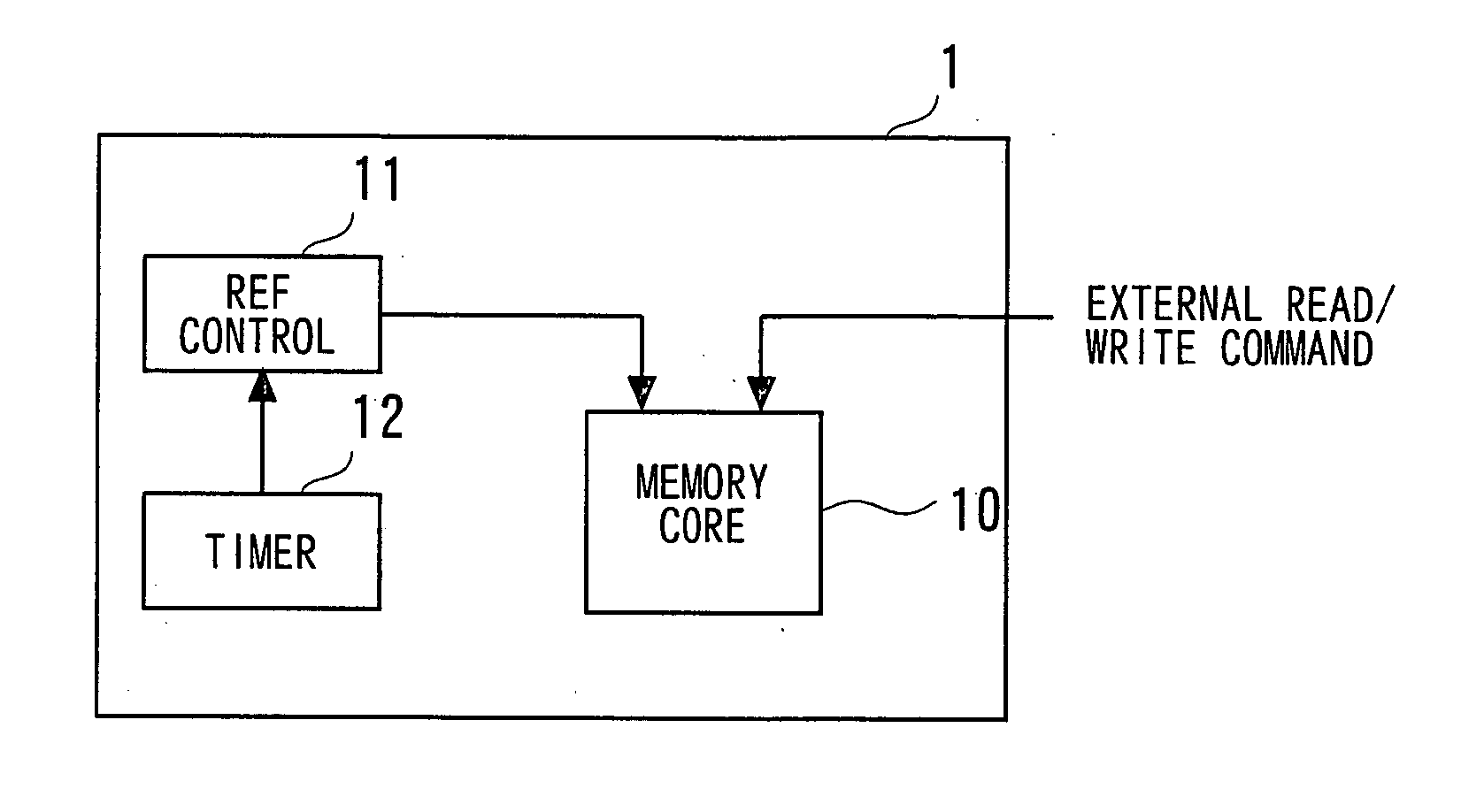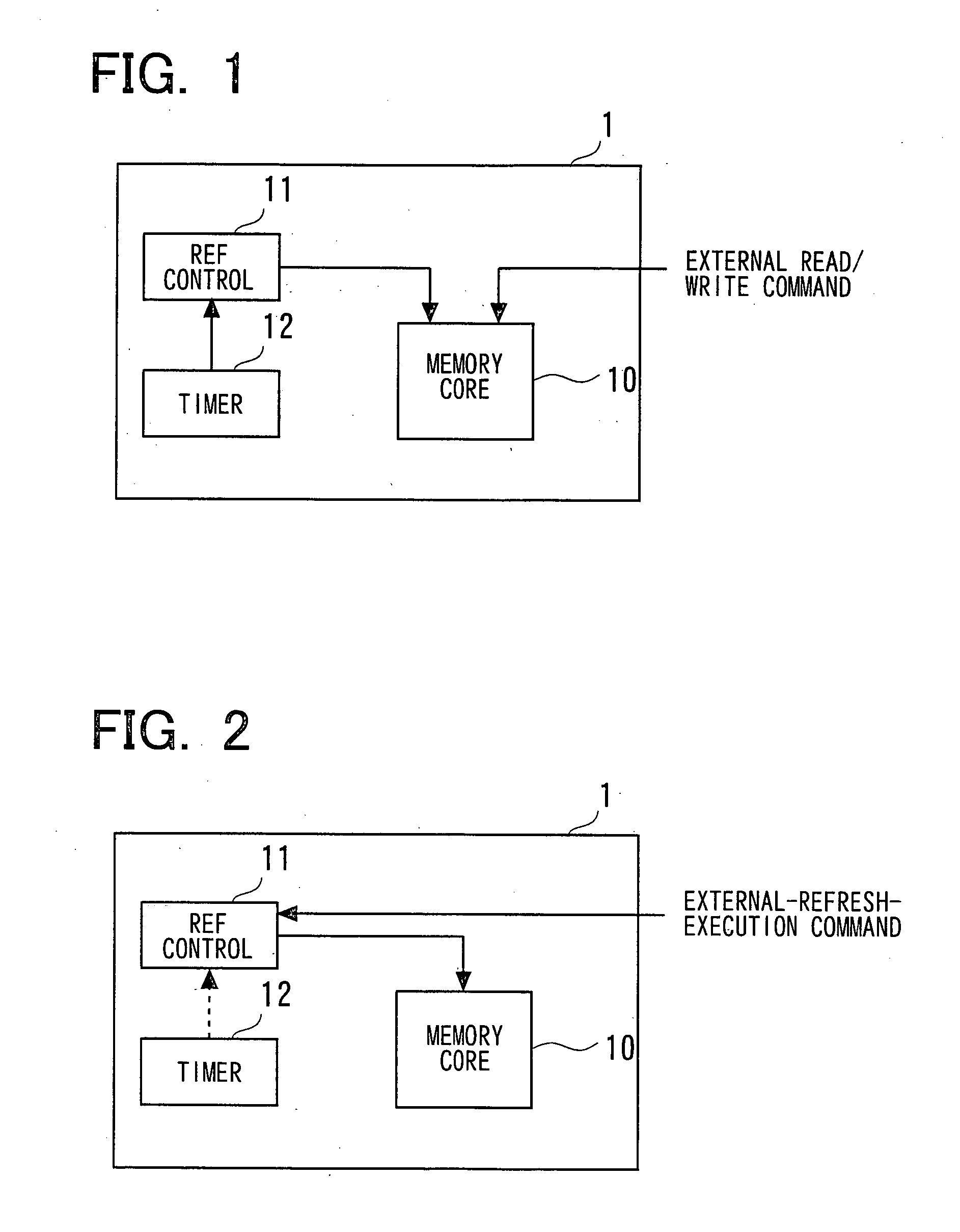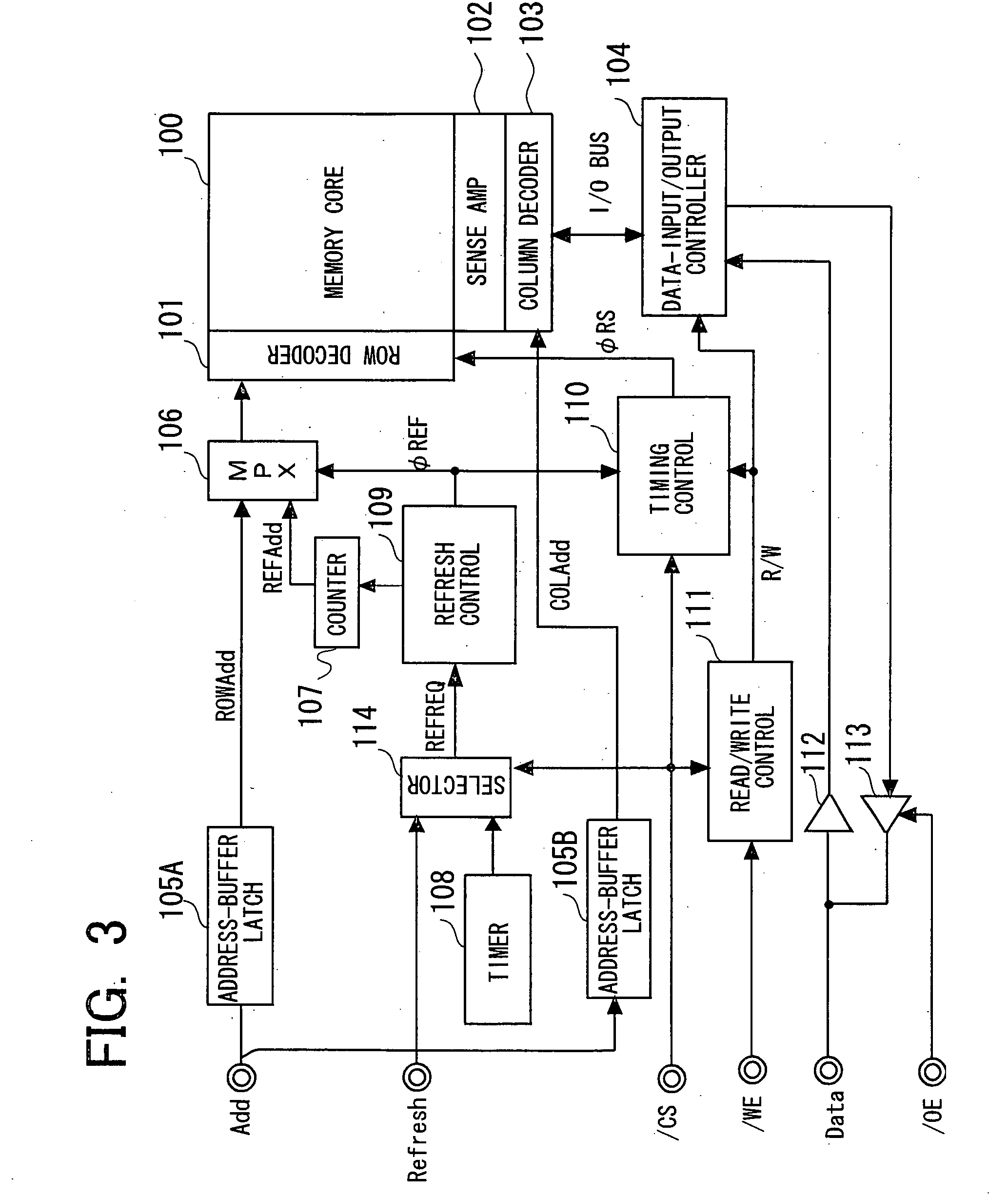Semiconductor memory device and refresh control method
- Summary
- Abstract
- Description
- Claims
- Application Information
AI Technical Summary
Benefits of technology
Problems solved by technology
Method used
Image
Examples
Embodiment Construction
[0037] A preferred embodiment of the invention will be described below with reference to accompanying drawings. With a semiconductor-memory device according to the present invention, a refresh-execution command is supplied to the semiconductor-memory device from the outside by a CPU, controller and the like, in a standby state. The semiconductor-memory device receives the refresh-execution command and performs the refresh operation. In an active state, the semiconductor-memory device performs hidden refresh that hides the refresh operation from the outside. Any method can be used for performing hidden refresh.
[0038]FIG. 1 is a diagram showing the configuration of an embodiment of the present invention. In FIG. 1, the configuration of a semiconductor-memory device in an active state is schematically illustrated. Referring to FIG. 1, when a semiconductor-memory device 1 is in the active state, an external read / write command supplied to the semiconductor-memory device 1 from outside t...
PUM
 Login to View More
Login to View More Abstract
Description
Claims
Application Information
 Login to View More
Login to View More - R&D
- Intellectual Property
- Life Sciences
- Materials
- Tech Scout
- Unparalleled Data Quality
- Higher Quality Content
- 60% Fewer Hallucinations
Browse by: Latest US Patents, China's latest patents, Technical Efficacy Thesaurus, Application Domain, Technology Topic, Popular Technical Reports.
© 2025 PatSnap. All rights reserved.Legal|Privacy policy|Modern Slavery Act Transparency Statement|Sitemap|About US| Contact US: help@patsnap.com



